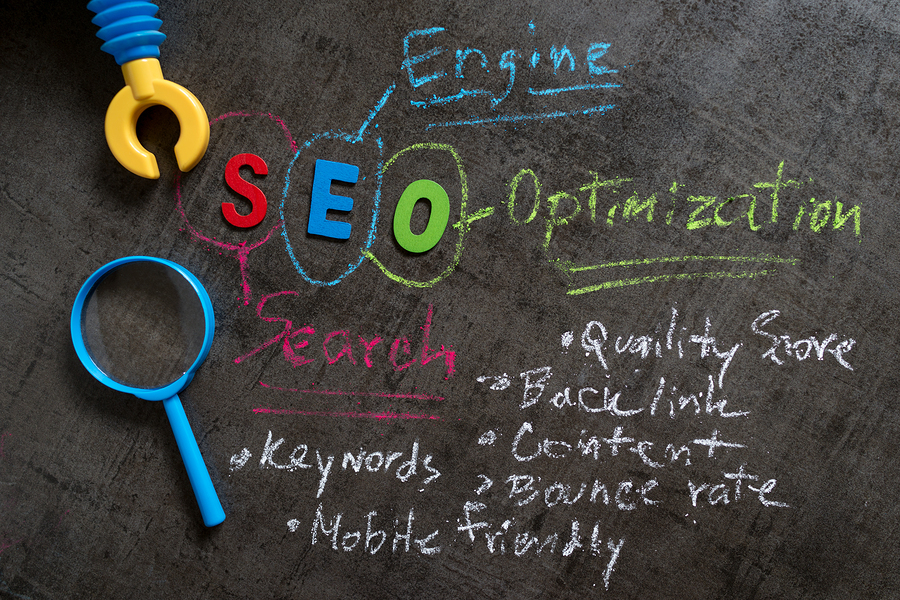Does too much content equal lower conversions? That’s certainly what Joe Pulizzi of the Content Marketing Institute (CMI) seems to think.
He says that content marketers are publishing too much and that’s why many content marketing initiatives fail to achieve the goals set.
Image: Pixabay
The article also says that his research for a planned book showed that the most successful marketers are focused on a single main channel order to achieve success.
In contrast, many marketers spread their content on around 5 social media channels and use up to 12 different content tactics. According to Pulizzi this results in:
- no audience loyalty
- no real following on any single channel
- poor content which then fails
His conclusion: Less is more. It’s better to focus on a single channel and make that channel work before expanding to another one.
Since content is such a key part of interacting with customers, I think this advice works for your website as a whole, and not just for the content. In other words, instead of spreading yourself too thin, you can focus on your customers and do one core thing extremely well to increase conversions.
Delivering the right content is a huge part of this.
To make it work harder and better for you as part of a holistic approach, you need to understand your customers, and that means answering three main questions:
- Who’s reading your content?
- Where are they looking for your content?
- What information do they need?
Nail those, and your content and website will convert better.
[Tweet “How to Set Yourself Up for High Converting Content”]
Who is Reading Your Content?
Image: Pixabay
The more you understand about your audience, the more likely you are to be able to create content that targets them specifically, enhancing the potential for increased conversions. Believe it or not, you are probably already collecting a lot of the data you need.
Let’s start with Google’s Universal Analytics product, which provides in-depth information on audience demographics and interests. You will have to enable this, but once you do, you can find out the gender and age of your customers, as well as their main interest areas.
Add that to the reports on location, technology and more, and you can create useful customer personas for better content targeting.
That means that, for example, instead of creating web content for women, you can create content for female technology users under 30. That’s got to help you attract your target market.
Mixing specifically targeted content with broader content gives you two chances to reach your audience. And the more you do this, the better you will be able to identify them.
[Tweet “”Mixing targeted with broader #content gives 2 chances to reach your audience.” @SHurleyHall”]
Then there’s social media analytics.
Everything you do online helps refine your image of who your customers are. Analytics from Twitter, Facebook Pages, LinkedIn, Pinterest and other social media sites show you (sometimes in great detail) who is looking at your content and what they do when they see it. Put all this together you have a head start on boosting conversions.
Here are a few guides to help with this:
- How to Use BuzzSumo to Create Content that Actually Converts
- Build Audience Connections with Content Marketing
- How to Skyrocket Your Conversion Rate with Facebook Custom Audiences
Where Are They Looking?
Image: Pixabay
You can build conversions beyond your website too, by figuring out where your customers are likely to be searching for information and making sure you have info there too.
The social media analytics mentioned earlier can help with this, as can the social reports in Google Analytics. No matter what your industry, the people you want to reach are likely to check you out on social media and look there for peer recommendations.
While you don’t want to spread yourself thin, making sure that your content appears on the site where MOST of your audience is will help improve the conversion funnel. That also makes it easier to help them help you: including sharing buttons for the most used sites means they can easily tell their friends, who might be looking in the same places.
As Moz points out, marketing in the right places early in the funnel can actually create opportunities and better conversions, so don’t miss your chance.
[Tweet “”Marketing in the right places early in the funnel creates #conversions””]
What Are They Looking For?
Image: Pixabay
Once you know who’s reading and where they hang out, the third part of creating high-converting content and websites is to figure out what they want from you and whether you are delivering it.
One great tool to help you establish this is the Visitor Flow report in Google Analytics. This is a powerful tool which Search Engine Watch calls a conversion optimization secret weapon.You can use it to see what brought people to your site (search, referrals, keywords and so on), where they landed and where they went next.
In fact, you can follow several on-site interactions. If people search for a phrase on your site, then stick around because they have found the answer, you can see that. And you can also see whether they encounter errors or leave your site to find information elsewhere. It’s an excellent way to find out if your content and site are missing the mark.
For even more insight, use advanced segments and get additional insights from keyword data in Google Webmaster Tools.
One other area you must address is landing pages.
As Social Media Examiner points out, if you send people from your social media page to an offer, then they must be able to see the offer the minute they land on your page. This may seem like a no-brainer, but it’s amazing how often it fails to happen.
Finally, never underestimate the power of a direct question. If you want to know what customers want, just ask. Use a customer survey so they can tell you what they want in their own words.
Bottom line
Instead of having too much content, use the tips above to target your content to the right people on the right sites at the right time. That’s a surefire way to make content convert better.
Otherwise, Pulizzi may have called it. Your content could be causing lower conversions.
Read other Crazy Egg articles by Sharon Hurley Hall.


















